一、开启Swagger验证
启用验证之后再看:多了个小按钮
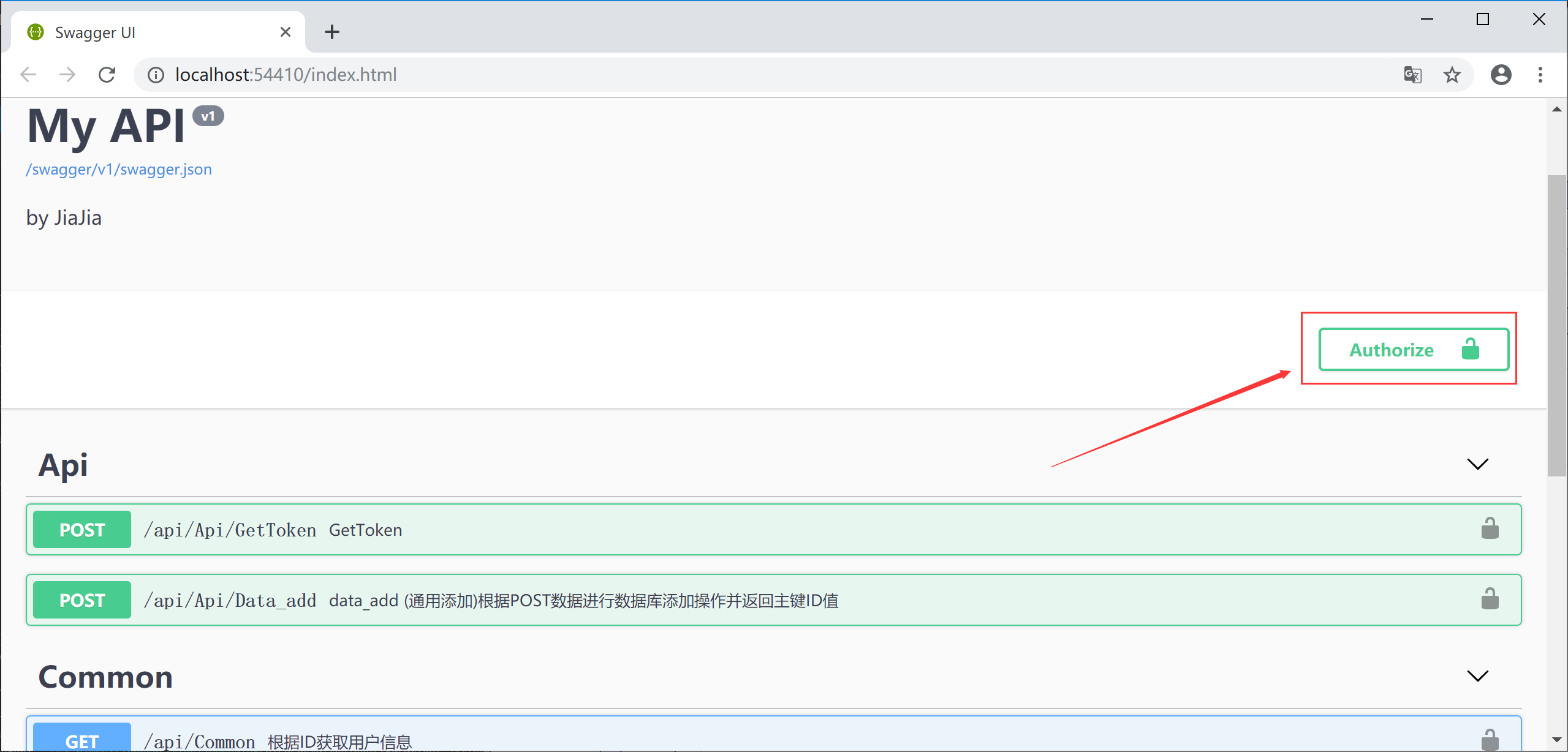
点开之后是如下界面:文本框里要如输入从服务器获取的Token。格式为:Bearer + 空格+token。 Bearer可以看作是一个默认的规则。

添加配置代码
#region 启用swagger验证功能 //添加一个必须的全局安全信息,和AddSecurityDefinition方法指定的方案名称一致即可,CoreAPI。 var security = new Dictionary<string, IEnumerable<string>> { { "CoreAPI", new string[] { } }, }; options.AddSecurityRequirement(security); options.AddSecurityDefinition("CoreAPI", new ApiKeyScheme { Description = "JWT授权(数据将在请求头中进行传输) 在下方输入Bearer {token} 即可,注意两者之间有空格", Name = "Authorization",//jwt默认的参数名称 In = "header",//jwt默认存放Authorization信息的位置(请求头中) Type = "apiKey" }); #endregion
整体部分为:
//1、注册服务Swagger services.AddSwaggerGen(options => { options.SwaggerDoc("v1", new Swashbuckle.AspNetCore.Swagger.Info { Version = "v1", Title = "My API", Description = "by JiaJia" }); //在 Start.cs => ConfigureServices 方法中的 AddSwaggerGen 处增加 IncludeXmlComments 处理。 options.IncludeXmlComments(string.Format("{0}/ZanLveCore.xml", AppDomain.CurrentDomain.BaseDirectory)); #region 启用swagger验证功能 //添加一个必须的全局安全信息,和AddSecurityDefinition方法指定的方案名称一致即可,CoreAPI。 var security = new Dictionary<string, IEnumerable<string>> { { "CoreAPI", new string[] { } }, }; options.AddSecurityRequirement(security); options.AddSecurityDefinition("CoreAPI", new ApiKeyScheme { Description = "JWT授权(数据将在请求头中进行传输) 在下方输入Bearer {token} 即可,注意两者之间有空格", Name = "Authorization",//jwt默认的参数名称 In = "header",//jwt默认存放Authorization信息的位置(请求头中) Type = "apiKey" }); #endregion });
二、在Startup类中配置身份认证服务
//添加jwt验证: services.AddAuthentication(JwtBearerDefaults.AuthenticationScheme) .AddJwtBearer(options => { options.TokenValidationParameters = new TokenValidationParameters { ValidIssuer = Configuration["Jwt:Issuer"], ValidAudience = Configuration["Jwt:Audience"], IssuerSigningKey = new SymmetricSecurityKey(Encoding.UTF8.GetBytes(Configuration["Jwt:SecretKey"])) }; });
并在Configure启动
app.UseAuthentication();
配置appsettings.json
{ "Logging": { "LogLevel": { "Default": "Information", "Microsoft": "Warning", "Microsoft.Hosting.Lifetime": "Information" } }, "AllowedHosts": "*", "Jwt": { "Issuer": "ZanLveCore", "Audience": "ZanLve", "SecretKey": "YupklGvHpiKbzqsKsBFVamQxXYWiNiYNxHAkcqqMYfeJpXIyerJLZGdBlTxVanUYJultDOtmQKJYgTKVrhLffeutSbxfFVbEQPe" } }
返回401 身份验证未通过
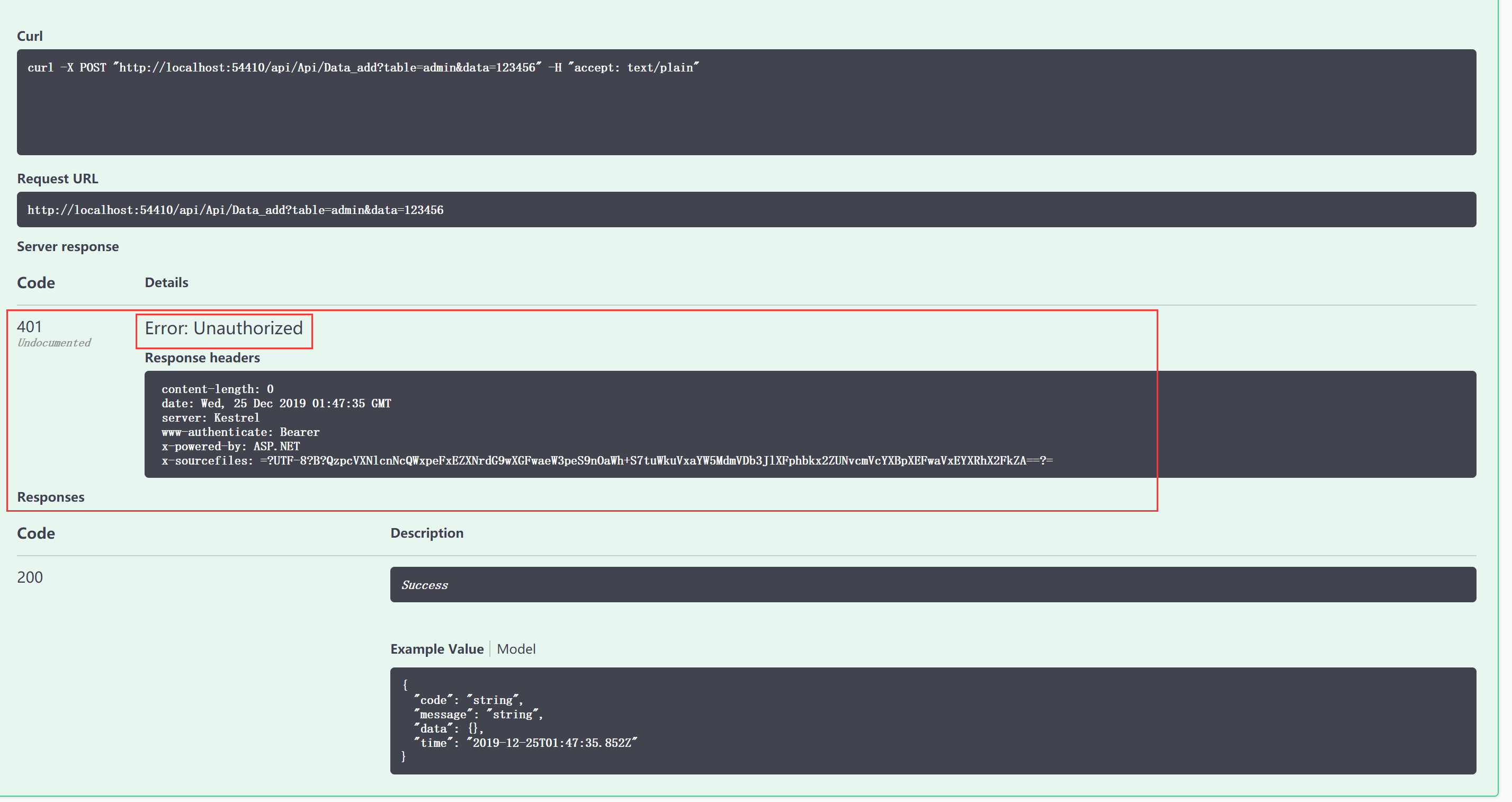
测试二:先访问GetJToken接口获取token,在访问接口
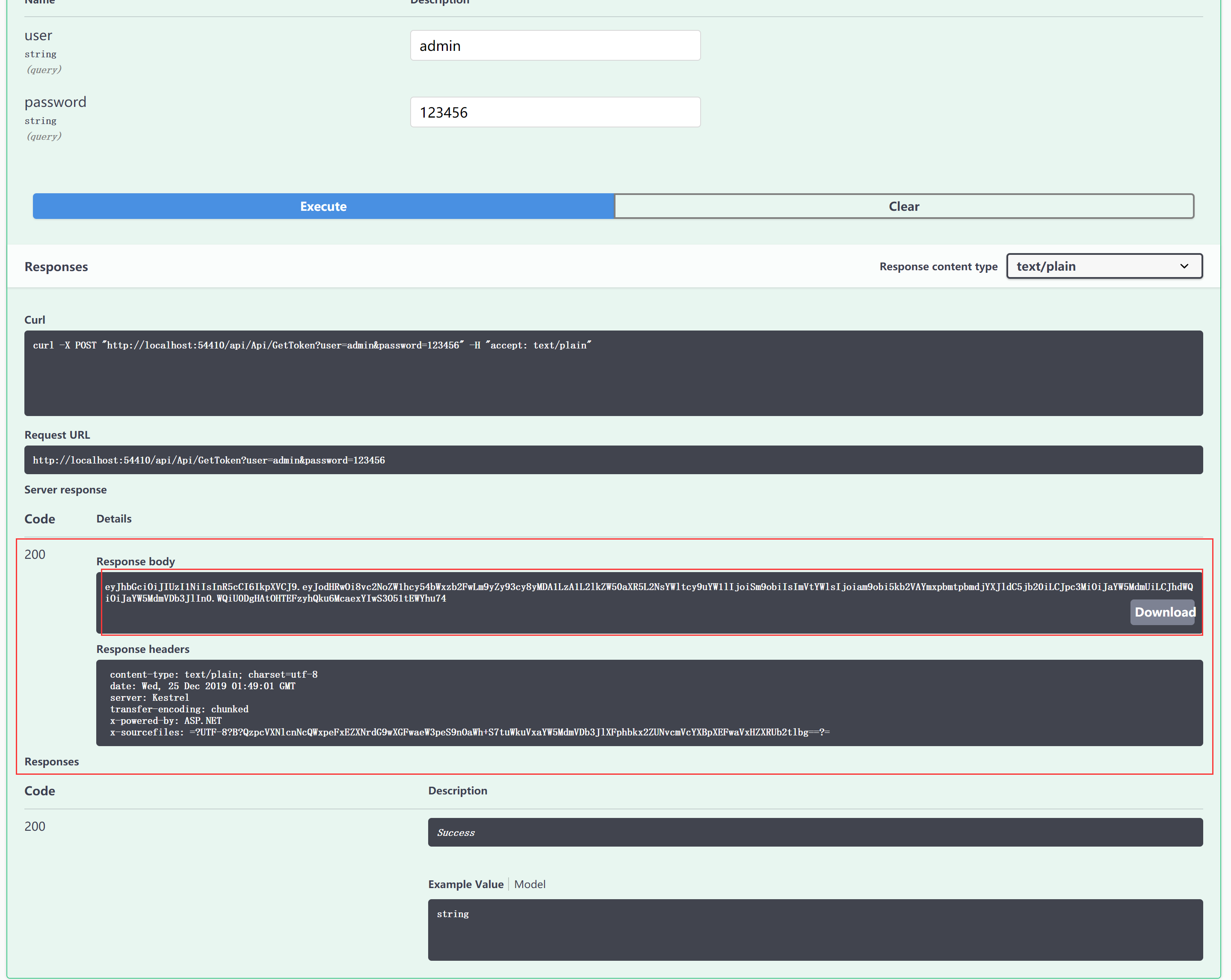
后将获取的token输入到Swagger的文本框中:Bearer +空格+Token
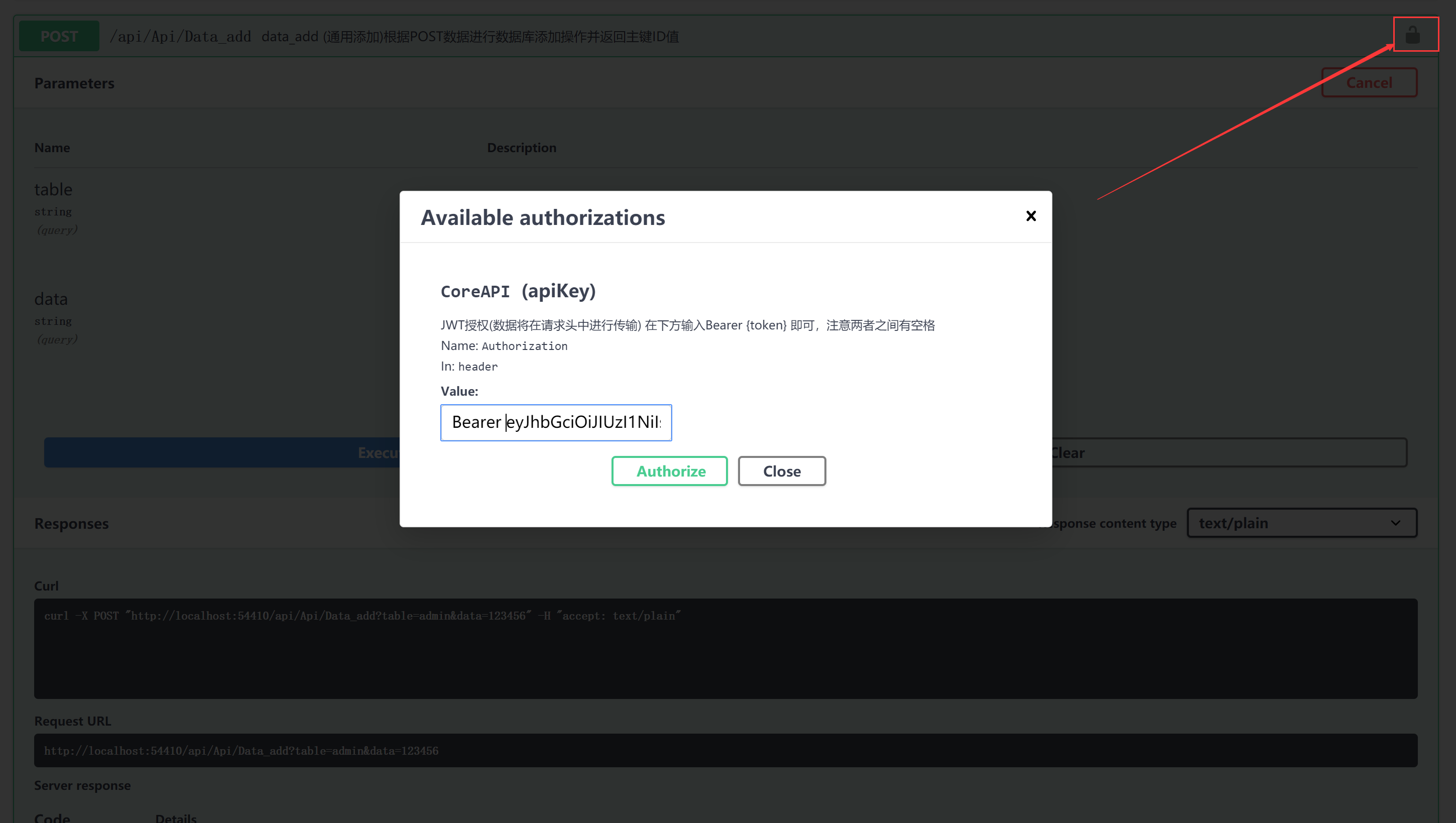
点击确认
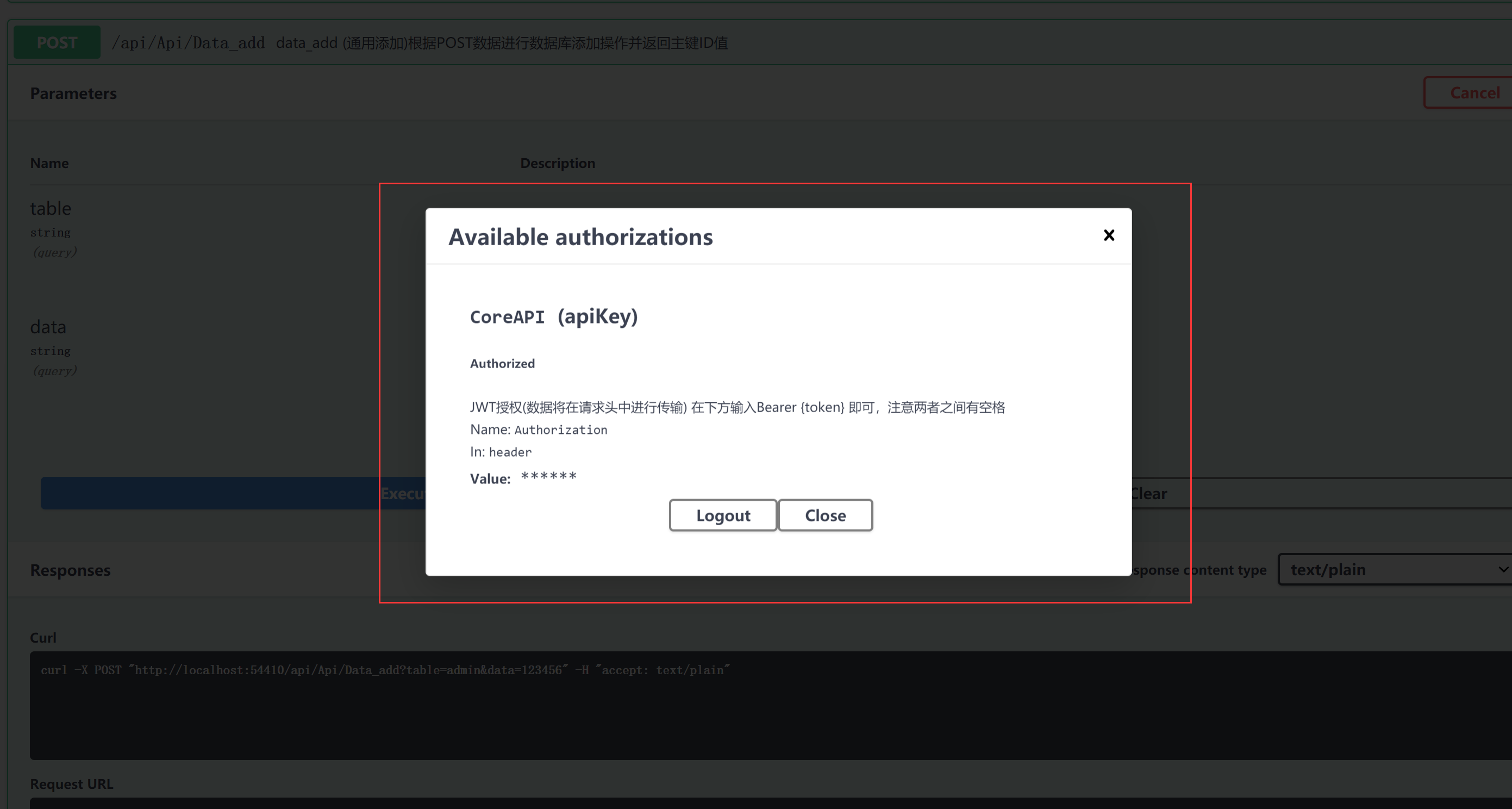
GetToken代码
/// <summary> /// GetToken /// </summary> /// <returns></returns> [HttpPost] public string GetToken(string user, string password) { //验证用户名和密码 var claims = new Claim[] { new Claim(ClaimTypes.Name, "John"), new Claim(JwtRegisteredClaimNames.Email, "john.doe@blinkingcaret.com") }; var key = new SymmetricSecurityKey(Encoding.UTF8.GetBytes(_config["Jwt:SecretKey"])); var creds = new SigningCredentials(key, SecurityAlgorithms.HmacSha256); var token = new JwtSecurityToken( //颁发者 issuer: _config["Jwt:Issuer"], //接收者 audience: _config["Jwt:Audience"], //添加claims claims: claims, //指定token的生命周期,过期时间 expires: DateTime.Now.AddMinutes(30), //签名证书 signingCredentials: creds); return new JwtSecurityTokenHandler().WriteToken(token); }
注意:必须指定token过期时间(即便你不验证token的时间)不然,请求获取的token是不会变的(固定值的token)
